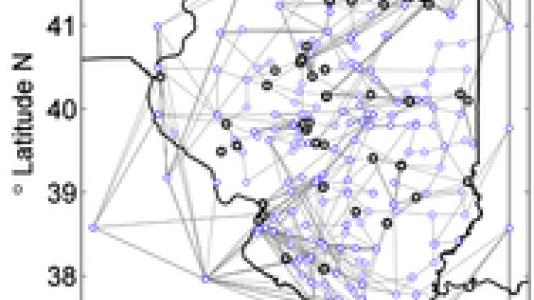
What is the best possible power grid configuration for our nation? How can we balance the increasing demands for power while minimizing costs and avoiding waste of resources?
Last year, Mihai Anitescu, a computational mathematician in Argonne’s Mathematics and Computer Science Division. received DOE funding to establish the Multifaceted Mathematics for Complex Energy Systems (M2ACS) to tackle these questions.
As part of the M2ACS research, Anitescu and his colleagues at Argonne are focusing on ways to optimize the effects of randomly changing variables, say, in wind or resource demand. Such variables can number into the billions. And to be useful for energy systems planning, any calculations have to be done rapidly – requiring access to one of the nation’s leadership computers.
With a newly formulated, highly scalable algorithm, the Argonne researchers applied for and were awarded a DOE Innovative and Novel Computational Impact on Theory and Experiment (INCITE) grant of 10 million processor-hours on Argonne’s IBM Blue Gene/P. And success was theirs: they were able to solve power dispatch problems in under an hour.
Now, the researchers are ready for the next step. With a 2013 INCITE grant of 14 million processor-hours on the Blue Gene/P, Anitescu and his colleagues are attacking a more complex problem, expanding the area under consideration from, say, the state of Illinois to the Midwest.